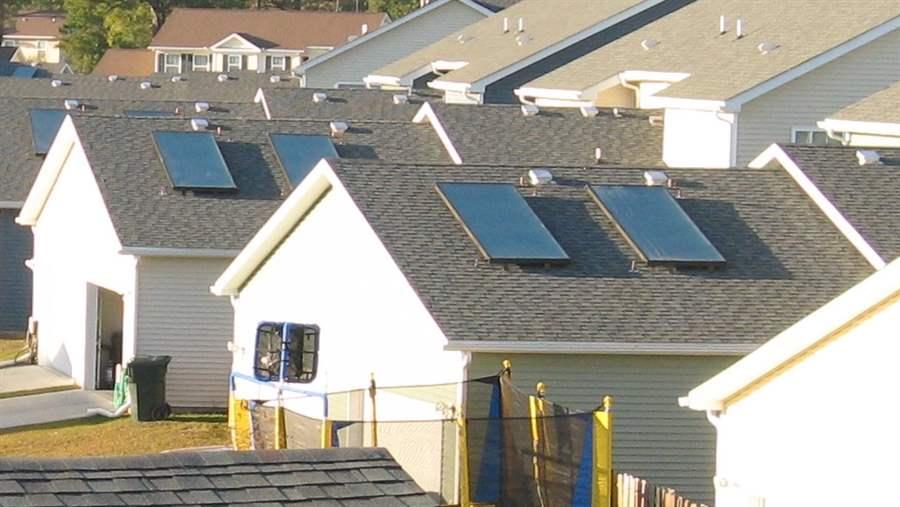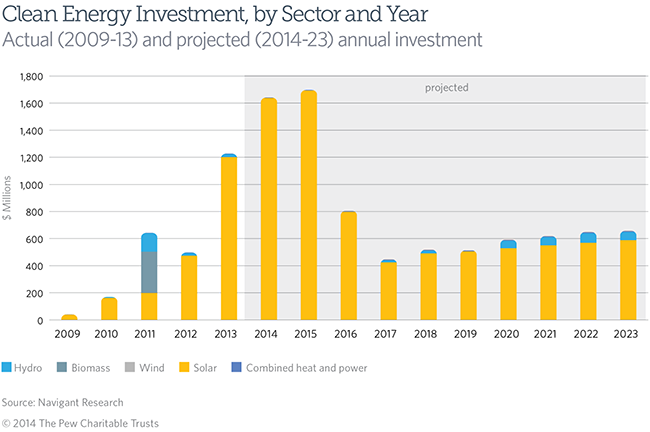Solar Shines in North Carolina
Clean Economy Rising
 © FLS Energy
© FLS EnergyAsheville-based FLS Energy owns and operates solar panels that power water heating at Marine Corps Base Camp Lejune.
Overview
North Carolina has emerged as a clean energy leader in the Southeast because of its high-caliber academic institutions, robust public and private investments, and policies such as the renewable energy and energy efficiency portfolio standard. The state has climbed nationwide rankings in the solar industry and attracted companies working in smart grid technologies, which use digital communications to allow electricity providers to detect and react to changes in usage. This brief examines the reasons for North Carolina’s success in clean energy innovation and its resulting economic growth.

Clean energy policies
North Carolina has emphasized the use of clean and efficient power sources to keep pace with its growing population and energy-intensive industries.1
In 2007, the state became the first in the Southeast to adopt a renewable energy and energy efficiency portfolio standard. The standard requires electric cooperatives and municipal utilities to obtain 10 percent of their electricity from renewable sources or efficiency improvements by 2018, and investor-owned utilities to obtain 12.5 percent of sales from such clean sources by 2021.2 Legislation to roll back the requirements failed in 2013 because state lawmakers were concerned about losing the economic benefits of these emerging industries.3
The state also offers owners of renewable energy projects a 35 percent investment tax credit and other financing opportunities, complementing federal tax incentives.4 These have spurred distributed energy projects—the generation of power on-site at homes or businesses.
Read the full brief › (PDF)
Endnotes
- Kristin Bunn and Derek Ramirez, 2011 North Carolina Economic Index, North Carolina Department of Commerce (June 2011): 2, 28–30, http://www.nccommerce.com/Portals/0/Research/EconIndex/2011 Economic Index.pdf.
- Energy Information Administration, “North Carolina: State Profile and Energy Estimates,” last modified Dec. 18, 2013, http://www.eia.gov/state/analysis.cfm?sid=NC.
- John Murawski, “Push to End NC’s Renewable Energy Program Dies in Committee,” News & Observer, April 24, 2013, http://www.newsobserver.com/2013/04/24/2847114/nc-house-committee-defeats-proposal.html.
- North Carolina State University, Database of State Incentives for Renewables and Efficiency, “North Carolina Incentives/Policies for Renewables and Efficiency,” http://www.dsireusa.org/incentives/index.cfm?re=0&ee=0&spv=0&st=0&srp=1&state=NC.






